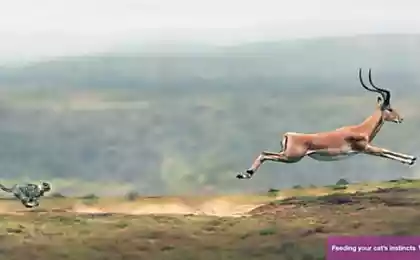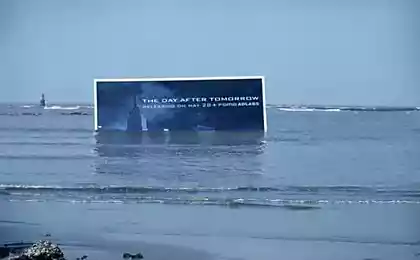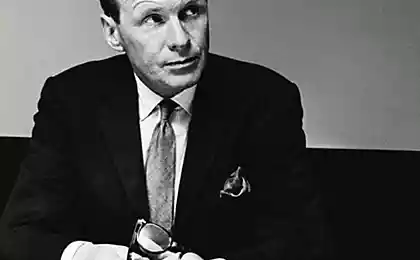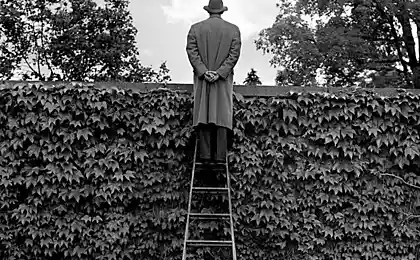567
Geico: Anyone can offend a Neanderthal.

Sometimes, though extremely rare, advertising agencies create truly outstanding advertising. Such advertising becomes cult, it is doomed to adoration. But most importantly, it can go far beyond its original form and produce results that could not have been imagined.
In 2005, a relatively unknown advertising agency Martin, part of the Interpublic Group, developed a video for Geico "Apology". The video depicted two Los Angeles Neanderthals whose feelings were offended by the way an insurance company manager used their image to symbolize simplicity.
“On Geico.com, you can easily manage your insurance. It's so simple that even a caveman can cope" - without trying to contain laughter, cheerfully told the manager. In the next shot, the manager, sitting at a table in a glamorous restaurant, apologizes to two Neanderthals: "We really didn't know you still existed."
Geico's "Airport" video
“Next time try to do a little research,” the caveman replies with an insulted look, whose appearance can be described as “metrosexual minus haircut.”
The humour of the Geico video is built on the ubiquitous American political correctness. In fact, the cave people of Geico symbolize illiterate people, whose ignorance in such cases is the cause of special sensitivity and inadequate reaction. The source of humor was chosen unmistakably, since it is easier and more useful to treat any shortcomings of a person with humor. Just as we laugh at the bukharics from the domestic comedy Features of National Fishing, Americans laugh at cavemen offended by the insurance company.
The way the video was received by the public forced the agency to continue the story of the life of a caveman in a modern, full of prejudices. The subsequent series of rollers with cavemen made them icons of the Geico brand. Despite the fact that the “offensive” slogan in one form or another is present in each video, they are essentially independent video sketches associated with the company name only the final package.
"Why doesn't anyone say, 'So simple that even a psychoanalyst can handle it?'" laments the caveman Geico
The success of the video not only boosted the reputation of the agency Martin, but also splashed plot elements into modern pop culture. According to copywriter and Martin vice president Joe Lawson, the agency did not expect any reaction from viewers at all. You should. We live in an age of consumer-generated content.
Quite quickly, on YouTube, the main platform for such content, various parodies of videos with cavemen appeared: from banal “photototoads” to professionally shot videos. To the enthusiasm of the public did not fade, the company Geico independently developed a promotional site CavemansCrib.com - an apartment in which caveman Joe Dayton and his two friends-tribes live. In addition, in order to dispel the disbelief of skeptics in the existence of cavemen, Joe Dayton regularly goes out. On the day of the final game of the NFL Super Bowl, Joe played golf with the chief sports columnist of CBS, and in late February interviewed on the red carpet Hollywood stars arriving at the Oscars.
Geico's first video with Neanderthals "Apology"
The apogee of the whole story with the cavemen of Geico was the negotiations of Geico, the Martin agency and the ABC television channel about the launch of the series Cavemen (Neanderthals). Steve Bassett, Martin’s creative director, was prompted by a fake trailer for a Neanderthal film, Geico, posted on YouTube late last year. While Cavemen isn’t the first attempt to transform story advertising into a sitcom, it’s likely to be the first successful attempt. Here's why.
Firstly, traditional advertising and its distribution channels, no matter how jaded it may sound, agonizes. This has already begun to be understood in Russia. In place of image advertising comes the concept of Branded Entertainment. For quite a long time, clumsy, tasteless and simply boring advertising was replaced by highly creative commercials. Such videos, in turn, fiercely competed with each other in the fight for the hearts of consumers. Provoking positive emotions and linking these emotions with trademarks became the main and only task of image advertising. Commercials became more and more like entertainment micro-movies. Advertising, and not only videos, turned into a new micro-genre – entertainment creativity.
The only problem was that such new entertainment advertising used the old methods of delivering itself to the consumer, or, more correctly, to the viewer. Advertisers have long wondered why the viewer categorically does not want to watch advertising during commercial breaks, although he is happy to buy a disc with a selection of videos that won in Cannes. Miraculously, advertising agencies did not notice that the product they produce is no longer advertising, but spectacles. Gradually realizing their new role, advertisers, along with creative agencies, turn into spectators.
Second, the Geico videos are episodic in their original concept, and each of them could form the basis of a separate half-hour television story. In addition, unlike the suicidal robot from the General Motors factory or homophobic auto mechanics, the Geico Neanderthals are the most politically correct target for deliberate or accidental grievances.
Famous Muscovites declaration of love to the city in social outdoor advertising
Brand Sberbank is $ 6, 2 billion. JP Morgan.























